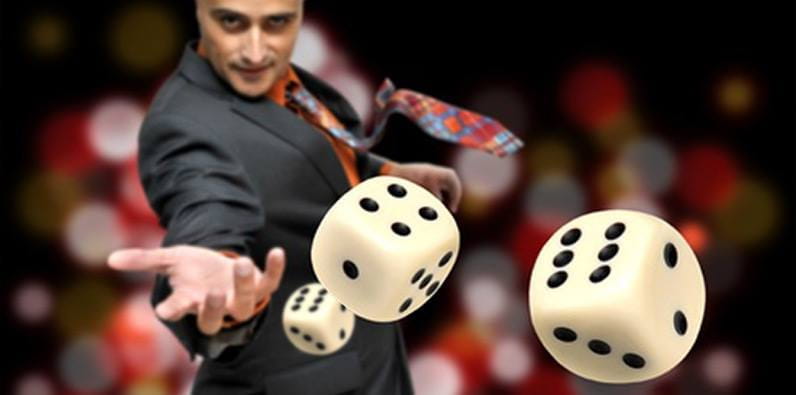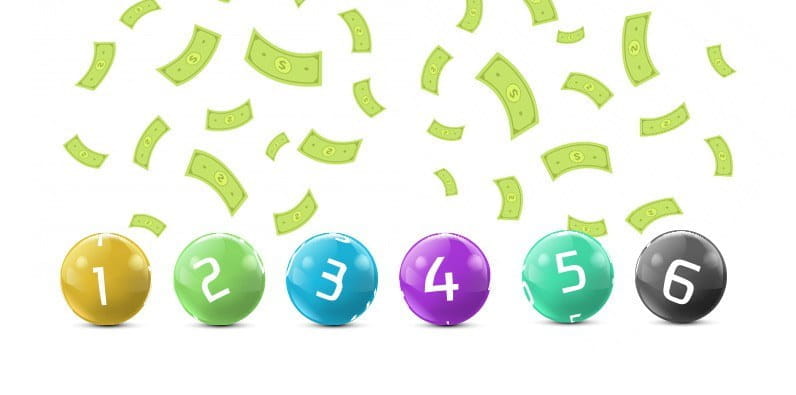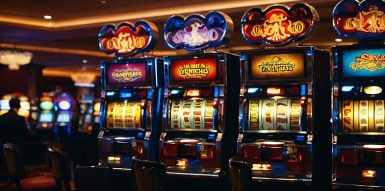Gambler’s Fallacy in a Nutshell
The gambler’s fallacy is a logical fallacy which is known to manifest in gambling situations, as they tend to create a suitable context for that. However, it could be observed in many other situations which have no relation to gambling, but still, have a lot to do with random events. It’s strange how much trouble one could get in due to the misunderstanding of basic concepts of how things work. Therefore, prior to defining the fallacy, we’ll go through some terms first. Then we’ll explain the nature of the fallacy, and will continue with examples and some further digging in the human mind to find its roots.
Before we continue, please note that this article is not a manual or instruction on how to bet successfully. It aims, however, to explain why the reasoning behind betting decisions tends to fail dramatically. Hopefully, we’ll help in dispelling a vast grey area and bring a sound understanding of the gambling world, which would help gamers play more responsibly.
What is Gambling?
Gambling is essentially the act of placing a bet on a random event, with the intent to win money by guessing the event’s outcome. Although we don’t pretend to be giving a precise scientific definition, our explanation covers the three known main traits of gambling:
- Wager – one needs to bet something of value in order to participate. Think of it as the cost of playing.
- Risk – the random nature of the event dictates that the outcome cannot be predicted with absolute certainty. Failure results in losing the wager.
- Prize – something of value which one receives in case of a favourable outcome.
In many cases, the event which determines the outcome, such as a roulette spin, a card draw, or a dice roll, takes place immediately after the bet is placed. This is typical for all casino games. However, the modern gambling industry has proliferated the wagering opportunities, and nowadays you could bet on events that take place far enough in the future. If you want to put some money on next Saturday’s football game exact result, or the indefinite impeachment of the American president, you are more than welcome.

It’s worth mentioning that the word gambling has wider implications, and you’ve probably heard it numerous times in situations that have little to do with the games of chance. We use it to describe reckless business decisions or insane risks taken by extreme sports enthusiasts. This is because randomness, risk, and rewards exist in many other real-life scenarios. Further down we give some interesting examples of the gambler’s fallacy (or gambler’s paradox) in non-gambling situations.
What is a Logical Fallacy?
It is immensely compelling to say that a fallacy is an error in reasoning. Actually, this is a simplified definition widely used in decision sciences. It’s short and elegant but could be quite misleading because reasoning errors are often confused with factual errors. Failing to do your fact check doesn’t mean that you are applying faulty logic. Here’s an example of that from the biology class: “All birds are reptiles and all reptiles are vertebrate, meaning that all birds are vertebrate”. In this statement the logic is correct, but the conclusion is drawn from a wrong fact – none of the bird species are reptiles. Here we have a factual error.
Even though it’s true that all birds are vertebrate, the way we arrived at that guarantees us a disappointing grade – in this class they teach biology, not logic. Of course, being factually correct doesn’t guarantee sound logical conclusions. Here’s an example, this time from the roulette table: “The wheel hit red seven times in a row, so black must be due”. Here we have true facts, but the conclusion we make out of them is totally wrong. This is a logical fallacy, as it stems from invalid argumentation, not from poor knowledge of facts. Another important thing about fallacies is that they are difficult to detect by the average adult. It takes a decent amount of mental effort from a trained mind to spot a fallacy.
Before we move forward, it would be great to point out that there’s a great deal of scientific research that covers logical fallacies, cognitive biases, the relation between them, the differences, and all sorts of other stuff related to how and why we fail to think properly. Check the sources we listed at the end – you’d be surprised to learn how much work has been done that proves we humans are not as smart as we think.
The Definition of Gambler’s Fallacy
As you probably have guessed, we are talking about a logical fallacy which is quite apparent among gamblers. Later we’ll see they are not the only group that exhibit this kind of faulty reasoning, simply because the roots of the fault are not in gambling. So, what do gamblers get wrong? They tend to believe that in a repetitive situation which is random in nature, the next outcome can be predicted from previous outcomes. This is also called the doctrine of the maturity of chances. The roulette example from above is a perfect illustration for that. Here are the reasons why this is incorrect:
- The events on which a gambler is betting are random in nature.
- Every event is independent. The outcome probability doesn’t change due to past events. Dice don’t have a memory, and neither does a roulette wheel. The level of uncertainty remains the same with every next event.
- Random events can be uneven. Coincidences happen all the time. There’s no rule or force to keep or restore the balance. If you don’t believe that, check the record for the number of lightning strikes that hit the same person. A quick spoiler: the number is higher than what is deemed statistically possible.
- Patterns may occur when we look at a sample of past events. However, these patterns don’t determine future outcomes.
- Bias is possible, but when true bias occurs, it’s a result of technical fault or intentional tampering with a random event generator (a pair of dice, roulette, a shoe containing six shuffled decks of cards, slot machine, etc.). Bias never results from the nature of randomness. This is, after all, the very meaning of randomness – when anything could happen at any time.
To summarise, the simple truth is that one cannot predict the lottery numbers from the next draw, no matter how far back in the past draws they look for patterns and clues. The probability for every number combination in every next draw remains the same. There is, however, one type of cases in which we have changing probability. This happens in card games like blackjack, where cards are drawn from the deck and not returned after that. This decreases the number of possible outcomes as you progress in the game. The more cards we remove from the deck, the higher the probability for drawing one of the remaining cards. However, the probability for any of the remaining cards in the deck is exactly the same.
Historical Example
The gambler’s fallacy has another name – the Monte Carlo fallacy. Some also call it the gambler’s paradox, but that is way out of context. Back in 1913, on one summer evening at Casino de Monte Carlo, one roulette wheel hit black 26 consecutive times. Millions of francs were lost by players who mistakenly believed that red was due. Knowing that the probability of red vs black is 50/50, they wrongly assumed a long streak of one colour hits was an unnatural deviation from the average, which had to correct itself. What did they get wrong?
- They believed that the average was a force of nature which had to correct all deviations. In fact, the average is a statistical result, which must be calculated from a very large sample to be representative. Twenty-six spins is not a large sample at all.
- They had mistaken the average for statistical probability. A probability of 50% doesn’t mean that in a sample of 100 spins you’ll get exactly 50 reds and 50 blacks. It simply means that for every next spin you have a 50/50 chance of red vs black.
- They had overestimated sample size. How large is 26 compared to thousands of spins daily? Large deviations from the average are not that uncommon in small samples. Don’t expect them to be representative of the entire population.
- They had underestimated the independence of future spins from past spins. Simply put, they forgot that the wheel has no memory.
This is a fascinating example because it illustrates how several people can make the same inadequate conclusion, from the same facts, at the same time, based on the same faulty logic. People are funny!
Origin of the Gambler’s Fallacy or Why do We Fail So Badly
Maybe you’ll find it hard to believe but the reasons for the gambler’s fallacy are deeply rooted in inherent peculiarities in the way our brains work. There are several phenomena which are very well described by cognitive psychology and explain why we trick ourselves into believing sheer nonsense. Ironically, many of them represent the dark side of evolution or the cost of overdeveloping certain traits at the expense of others. Apparently, people use a rather intuitive approach towards randomness which makes them show naive beliefs and great misunderstanding regardless of education and training.
The Representativeness Heuristic
A heuristic is the psychological phenomenon of applying mental techniques that are not optimal or 100% rational but allow for achieving immediate results. The representativeness heuristic states that people evaluate the probability of an event by comparing its similarity to other events they have experienced in the past. In other words, we rely on our own unique experience more than we rely on math. What if we are asked about the probability for the next 6/49 lottery numbers to be 1-2-3-4-5-6? Most people would answer that, if not impossible, this is at least highly unlikely. As the draws we’ve witnessed in our limited experience are more chaotic, we’d easily assume that such an ordered draw is less probable. In fact, math dictates that it’s exactly as probable as any other combination of six numbers from the given range.
The Clustering Illusion
Another phenomenon observed in close relation to the representativeness heuristic is the clustering illusion. This is when people see a series of random events as suspiciously ordered or patterned. We tend to recognize patterns, especially in small samples. Patterns are important to humans because they give meaning to things we observe and are proven to facilitate learning and memorising. We have the tendency for finding them, not for willingly ignoring them. Our ability to identify patterns has been critical to our survival as a species. However, patterns have a dark side too.
When seeing them in a small sample we easily conclude that they are representative of the entire population. Random events appear as non-random because we ignore the probability for coincidences, repetitions and rare events to occur. In the lottery example from above, due to the visible pattern (6 consecutive numbers), most people would say that the sequence of numbers is not random, and therefore is not likely to happen in a random event like the lottery draw.
The Belief in Fairness of Random Events
There’s a popular but mistaken belief that gambling is fair. To many players, randomness implies that irregularities must correct themselves, that long losing streaks must be compensated by one or more wins, and vice versa. The truth is that uncertainty guarantees only one thing – that our favourable outcome cannot be guaranteed. Not only the roulette wheel doesn’t have a memory, but it doesn’t have a sense of fairness and justice either.
Misunderstanding Probability
There’s one law which is pivotal for understanding probability. It’s called the Law of Large Numbers. It says that with the increase of the sample size the average of the registered outcomes converge to the mathematical probability. Simply put, in a sequence of coin tosses, the longer the sequence, the closer the average of each outcome would be to 50%. The trouble begins when we underestimate the opposite direction or the decrease in sample size. The smaller the sample, the larger the deviations we could expect. Strangely enough, many people forget that and end up mislead by the sinister law of small numbers, believing that a small sample is a representative.
Semantics and Presentation of Information
Probability is often presented as odds using phrases like “1 out of 10”. This can be misleading because the phrase creates a false expectation of even distribution and regularity. Also, it matters a lot if a random event is presented as an individual occurrence, or as part of a sequence. Studies have revealed that when one event is presented as a part of a sequence people ignore the event’s independence. They automatically assume that the event is related to past events and fall victim to the gambler’s paradox or fallacy.
When the event is presented independently, we are more adequate in our estimation of probability. Let’s take the classic coin toss example. If asked “What’s the probability of heads versus tails?” most people would say 50/50. However, the answers will change dramatically if we ask: “What are the odds for tails if the last 6 tosses showed heads?”.
Variations and Related Fallacies
Without mentioning it we described two types of the gambler’s fallacy. In the first type, the player assumes that the chance is fair and expects imbalances in the event outcomes to be corrected. The second type is observed when gamblers see imbalances as a reason to mistrust randomness and believe in a bias that favours certain outcomes. However, biases are very difficult to prove and exploit because of the need for a very large sample. Yes, we said it again – sample size affects the way we see things. There is however a case that caught the attention of the press in 1873.
A man called Joseph Jagger took advantage of a biased roulette wheel to win obscene amounts of money from serial bets on apparently favoured outcomes. Wonder how he did that? First, he used six helpers to secretly observe and record the wheels for days, which got him a large enough sample. Secondly, his engineering skills and knowledge of the technical limitations back then made him confident that wheels cannot be perfectly crafted and balanced. Of course, what Jagger achieved is not possible today. Casinos don’t have tolerance for teamwork, and modern technology is less likely to produce a biased wheel.

In addition, there’s another type called retrospective or inverse gambler’s fallacy. It is present when a player concludes that a very rare event must be a result of a very long sequence of trials. In other words, no one would believe their eyes if you grab three dice for the first time and throw three sixes in your first roll. As we already know, however, due to equal probability this is perfectly normal. The gambler’s fallacy is closely related to the so-called hot hand fallacy. It is widely observed in basketball and is the belief that a high scoring player in a game will continue to score. The two fallacies have a mutual origin in the overestimation of the influence of recent outcomes. The difference is that in the hot hand fallacy the trend is expected to continue, not to reverse.
Significance of the Gambler’s Fallacy
The fallacy is extremely important if you value your peace of mind. Knowing about it, and being able to recognise and avoid it, is vital to our ability to approach many situations in a neutral way and use the so-called logical fallacy. As we saw both ignoring randomness and praising randomness can be misleading. Does this mean that statistics should be misleading and that we’ll never know how to read numbers? Let’s rely on our knowledge and make sure we are logically bulletproof under any circumstance.
Non-gambling Situations
As promised, here we’ll give some examples showing the gambler’s fallacy is not strictly related to gambling. Any situation that involves random event outcomes can provoke people to demonstrate the same errors in reasoning:
- War and survival – there is such thing as a shell hole fallacy. In the World War I soldiers believed that taking cover in an impact hole is a good idea because allegedly, it was highly unlikely for artillery shells to hit the same spot twice in the same day. This is a wrongful application of the multiplication rule. If there are 1000 cannons of enemy artillery, the probability for being hit in one salvo is 1/1000.
The probability for two hits in the same spot is 1/1000 times 1/1000, i.e. one in a million. This, however, is valid when the two salvos haven’t taken place yet. When the first salvo is over and the flying dirt has settled, the probability for the next one to land a shell in an already hit spot is again 1/1000. Furthermore, artillery barrage is not fully random – the enemy deliberately aims at your positions and observers call for aim corrections when targets are not hit.
- Investments – some investors wrongfully assume that repeated increases (or decreases) in a stock price in several consecutive trading sessions should be followed by a reverse in the trend. These expectations lead traders to the mistake of either holding on to a losing position for too long or closing a winning position too quickly without fully exploiting its potential.
- Expecting a child in the past – before the advancements of modern medical science, people had to wait till birth to see if their child was a girl or a boy. There are documented cases when parents changed their anticipation based on other births that already happened in the area. Here the fallacy sounds like this: “The last four kids born in town this year were boys, so I’m afraid mine, which is next, would be a girl.” This is a case of seeing patterns in small samples and extrapolating them to the entire population. Also, they expected a self-correction due to the belief in a balanced population.

There are peer-reviewed articles which prove that even scientists are susceptible to the gambler’s fallacy. When conducting research scientists could make less than optimal decisions about the sample size that should be subjected to a planned experiment. The fallacy is also evident in cases when they have to estimate the need for repeating the experiment with another sample. Apparently, no one is insured.
Relation to Problem Gambling
Science has found that problem gambling occurs when individuals resort to gambling as an escape from stress, anxiety or depression. The primary reason is found in the need for a getaway, not in the false beliefs. Also, in neurophysiology, it’s been found that addiction has a lot to do with the processes which risk-taking, reward, and loss trigger in our brains. However, if not a primary reason, fallacies can be a huge catalyst. After all, if someone believes they could beat the odds, they are bound to try. Going down the spiral from that point is easy. There’s a great deal of evidence that this is valid not only in problem gambling. The general tendency to use escape methods for coping with negative moods and situations is accelerated by erroneous beliefs.
Representation in Pop Culture
In a Martin Scorsese classic from 1995 called Casino, there are some small episodes that illustrate actions driven by the gambler’s fallacy. If you haven’t watched the movie, beware of spoilers. In one episode a high-stakes player who won the abstract amount of money was tricked to return to the hotel after checking out. Knowing that the man wouldn’t keep far from the casino for too long, the manager just watched him gamble all his winnings and lose more than he’d previously won. The moral of the story is simple – the odds are against you and players lose more than they win in the long run.
The next time you draw a few losing hands, remember that your luck doesn’t have to reverse if you keep playing. In another episode, the protagonist measured a pair of dice with a Vernier calliper to make sure they are not loaded. The context doesn’t say who was supposed to get reassurance – the casino or the players. In another one, a man gets fired for not removing a slot that hit the jackpot three times in 20 minutes. Both the dice and the slot episodes illustrate the wrongful attribution of coincidences to bias. Apparently, despite knowing their game, the casino owners are also susceptible to the gambler’s fallacy. Another explanation is that money loss simply doesn’t seem fair to anyone.
How to Prevent Ourselves?
It’s difficult to come up with good advice while knowing how many nasty traps our own mind sets for us. Nevertheless, we must try. We, humans, forget sound logic when put in certain situations. Therefore, you need to remember the basics and do your best to embed them as apriori concepts in your mind. Remember Monte Carlo – many people paid obscene amounts of money back in 1913, for a lesson that you could now learn for free. Use that in your advantage. We are not depressingly stupid. Our brains simply change the reasoning process in varying contexts and conditions. That said, we are selectively illogical. Just know where the traps are and don’t run into them with confidence. And last, know the odds and accept them – don’t try to beat them.
Here’s the list of resources we used for this article, that you might find helpful:
- Bo Bennett, “Logically Fallacious: The Ultimate Collection of Over 300 Logical Fallacies“, 2018, Archieboy Holdings LLC, ISBN: 978-1-4566-0752-4
- Juemin Xu, Nigel Harvey, “Carry on winning: The gamblers’ fallacy creates hot hand effects in online gambling“, Cognition, Volume 131, Issue 2, May 2014, Pages 173-180
- Amos Tversky, Daniel Kahneman. “Belief in the law of small numbers“, Psychological Bulletin, 1971, Vol. 76, No. 2. 105-110
- Centre for Addiction and Mental Health , “Probability, Random Events, and the Mathematics of Gambling”
- Greg Barron, Stephen Leider, “The Role of Experience in the Gambler‘s Fallacy“, Journal of Behavioral Decision Making, Volume23, Issue1. January 2010
- Rachel Croson, James Sundali, “The Gambler’s Fallacy and the Hot Hand: Empirical Data from Casinos“, The Journal of Risk and Uncertainty, 30:3; 195–209, 2005
Gambler’s Fallacy – Questions and Answers
To make it easier for you to understand it, we chose to gather some of the most important, significant and frequently asked questions about gambler’s fallacy. We tried to give them answers that are easy to understand and straight-forward. And as a farewell gift, we would like to show you our list of our recommended £10 deposit casino sites. Surely one of them will grab your attention! We hope that you enjoyed our article! See you next time!
What is gambler's fallacy?
The fallacy of a gambler is mainly the belief that the chances of a certain event to happen are either bigger or smaller, depending on the fact that the entire process was repeated a number of times.
What is the gambler's fallacy - give an example?
Well, the most spread one is the game of flipping a coin. Gambler's fallacy manifests itself in the fact that most people out there are ready to bet on heads if the coin flipped on tails number of times in a row.
Is the gambler fallacy really a fallacy?
Actually, yes. The gambler's fallacy origins come from the behaviour of people - they make bigger bets after repetitive losses. But, if the odds and the probability are independently distributed, the losses that already occurred cannot affect the subsequent games in terms of chances.



